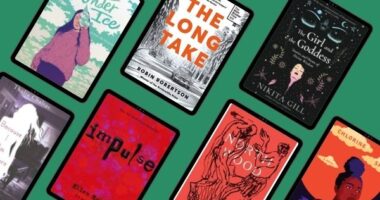Not all books are limited by the conventional constraints of form, structure, genre and style. Some transcend these boundaries, proving bold and experimental in their way of storytelling. Here is a list of 7 books that challenge genre, style and structure.
7 Books That Challenge Genre, Style And Structure:
Pale Fire by Vladimir Nabokov

This book is metafiction – story within a story. The book within a book is a novel in verse, along with a commentary on it by the editor. The poet who wrote the poem is dead, and the editor is an unreliable narrator. Kinbote, the editor, tries to make out his friendship with the poet to be great and intimate, but in fact he is a borderline sociopath who stalks the poet. He also makes weird allusions to a fictional homeland, all of which lend to the book a feeling of dark humour and weird satire.
Gadsby by Ernest Vincent Wright

This novel is an experimental attempt to transform the structure of a novel. It is entirely written without using the letter ‘e’. Such a work is called a lipogram, and this is an interesting one bacause ‘e’ is the most common letter in the English language. It’s said that Wright tied down the ‘e’ key on his typewriter lets a naughty ‘e’ slip in. The weirdest part is that the novel requires the description of a wedding, and Wright hasn’t used the words marriage, bride, cake or white.
Hopscotch by Julio Cortazar

This novel is also experimental in its form and structure, and introduces to literature the concept of expendable chapters. Basically, it consists of 155 miniature chapters, the last 99 of which are ‘expendable’. That is, they serve only to fill in gaps present in the first chapters, and have no use otherwise. The first 36 chapters follow the life of an Argentinian intellectual, Horacio Oliveira, in Paris. Then, till chapter 56, the setting shifts to Argentina and a number of weird events happen. And the last 99 chapters of course, aren’t essential to the understanding of the story, but enhance its appeal.
Alphabetical Africa by Walter Abish

This book is not just weird, but a stroke of brilliance and genius literature. The first chapter contains only words beginning with the letter A. The second chapter only contains words beginning with A and B, the third with A, B and C and so on. After Z is reached, the author starts subtracting a letter from his chapter. To be able to express oneself at all is a big deal, and to do so using words with just one initial letter is phenomenal. In fact, this book serves as a makeshift dictionary itself!
The Master and Margarita by Mikhail Bulgakov

This book blurs lines between a lot of genres. It is a satire, but also theological, with elements of fantasy and supernature, but also a social commentary on Russia. Featuring Satan and his crew, a cat who talks, drinks vodka and plays chess, along with Pontius the Pilate, this book is a whole journey in itself. It will leave you bewildered, but also very satisfied.
The God of Small Things by Arundhati Roy

The temporal and structural form of this book, along with its linguistic notions of sense, are quite warped. The timeline shifts back and forth between the twins’ childhood, their adulthood after the accident and the timeline of their meeting. Plus, to convey the world of the children, which works on its own mechanisms, Roy also uses seemingly mismatched words and phrases together.
Diary of a Bad Year by J. M. Coetzee

The form this book takes is particularly unusual. In the beginning, the page is split into two horizontal rows. The top half of the book is an extract from a book by the narrator and the bottom half is his diary. Suddenly, there is another column that is introduced. This column takes on the narrative of a girl the narrator meets in a laundry room.
Also Read: Dark Novels In The Form Of Poetry
.



